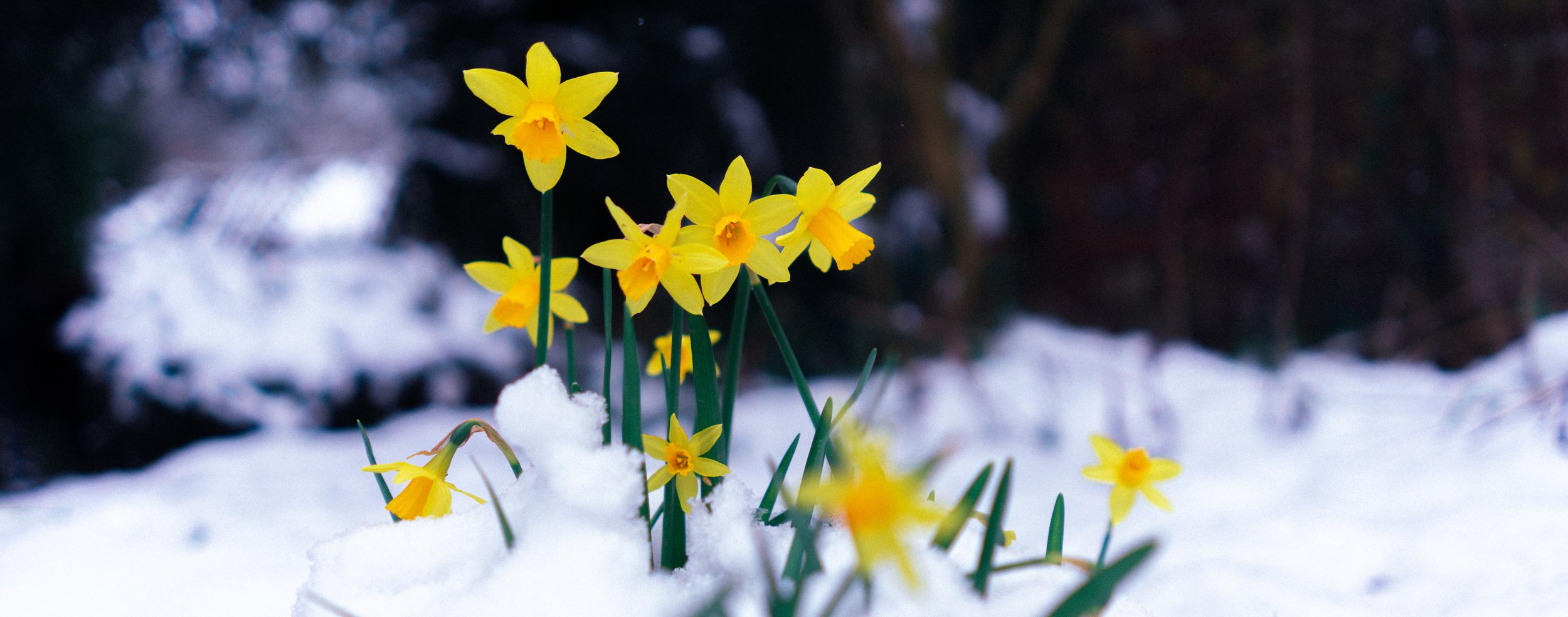Don't Eat Daffodils; Headlines in Spring
/Daffodils bloom the pages of news sources every year for their striking appearance, economic value, cultural symbolism, and for their potential to poison pets.
Daffodil bulbs are highly poisonous to animals but those same toxins taste repulsive, even to dogs. Deer and rodents won't touch them.
Yet, as we'll see, their toxic taste has been masked by onion soup at a school.
Good news: symptoms also start with immediate vomiting, which flushes the stomach before complete digestion.
Most animals just vomit and leave the repulsive plant alone.
However, this didn't stop some kids in Suffolk, in the UK, from supping some deadly daffodil soup.
"School Children in Poison Scare"
According to the RHS, people 'regularly' mistake them for onions, which sounded absurd until I found *this article* about a dozen children falling ill from daffodil soup at a school:
"The soup had been made in class using onions dug from their vegetable garden, but a daffodil bulb was also unearthed accidentally by one of the children and put in the dish. Around a dozen Year Five pupils began vomiting in bowls and toilets, while others suffered stomach cramps."
"Drugs from Daffodils"
In this edition of Chemistry and Industry, ancient Greek cultures used narcissi as a topical numbing agent and as a way to induce vomiting:
"Daffodils have been used regularly in folk and traditional medicine, for in addition to the well-documented sickness-inducing properties, extracts can produce numbness, hallucinations, convulsions and cardiac effects. Applying juice or aqueous extracts to burns or open wounds can result in numbness."
The 1931 book A Modern Herbal expands upon this usage:
"It has been used as an application to wounds. For hard imposthumes, for burns, for strained sinews, stiff or painful joints, and other local ailments, and for 'drawing forth thorns or stubs from any part of the body' it was highly esteemed.”
“The Daffodil was the basis of an ancient ointment called Narcissimum.”
“The powdered flowers have been used as an emetic in place of the bulbs, and in the form of infusion or syrup, in pulmonary catarrh."
So those schoolchildren accidentally ingested an ancient emetic - which worked as expected.
Lucky for them, the dosage was low.
Pictured in this blog are the 'Jetfire' variety of narcissi growing in my garden, a type which have won an award from the Royal Horticultural Society.
"The Cult of the Daffodil"
According to this Spectator article,
"Spring is the season of supermarket daffodils."
But those who pick the flowers for a global market sometimes suffer for their work.
"A skilled picker can expect to earn upwards of £30 an hour. Many of the fastest harvesters avoid using gloves, which makes them susceptible to a condition colloquially known as ‘daff rash’."
"Distribution of Daffodil Pickers' Rash"
"Daff' rash" is explained by this published study, which concludes daffodil rash is from repeated or prolonged contact with the sap inside the daffodil's stem.
"The method of picking and then gathering the flowers explains the development of the rash at the points of contact of plant sap with skin. Crystals of calcium oxalate in the sap, in conjunction with alkaloids, act as an irritant, and also cause the characteristic sores."
"Do Daffodils Kill Other Flowers?"
Further to this toxicity, Chemistry educator Andy Brunning revealed on his website that daffodils need their own vase, else they'll suffocate other flowers.
"Placed in a vase with other flowers, they can cause premature wilting and death. Compounds in the mucilage are to blame for the effect daffodils have on other flowers."
Sap from the stem - the same sap giving people daff' rash - is released into the vase water. These alkaloids either poison other flowers outright or else create a sugary environment for bacteria to blossom, blocking stems from drinking water.
There are exceptions however:
"Interestingly, some flowers have more tolerance for the daffodil’s alkaloid poisons than others. The vase life of irises, for example, can actually be enhanced by the addition of a daffodil. This is because a particular alkaloid, narciclasine, slows down the creation of proteins which control ageing and degradation of plants."
"Welcome to The Daffodil Society"
The toxicity doesn't put off the devoted collectors of daffodils, such as the Daffodil Society established in 1898, and now a registered charity for all to support.
"Established in Birmingham as The Midland Daffodil Society in 1898, The Daffodil Society is the specialist society of Great Britain for all who are interested in the Genus Narcissus, by way of exhibiting, breeding or just lovers of the true heralds of spring."
"Daffodils are one of the most popular of all garden plants and appear in over 80% of British gardens."
In conclusion,
Don't eat daffodils.




